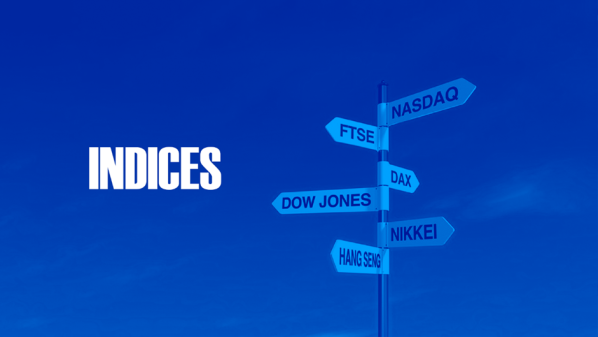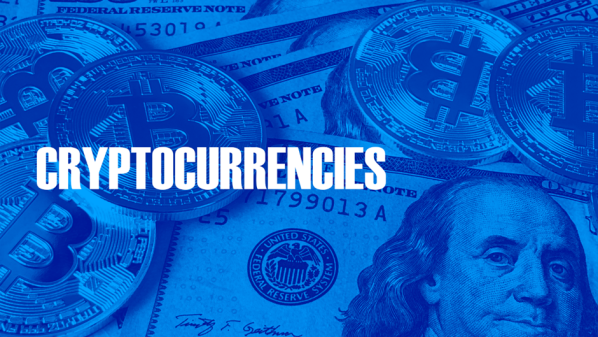
This week, U.S. stocks staged a “roller coaster” market, with violent fluctuations. The Dow once reversed a 1,000-point intraday loss on Monday and closed higher, while the S&P 500 had a daily intraday range of at least 2.25% this week. Although the market has generally priced in the possibility that the Federal Reserve will raise interest rates in March, the international geopolitical situation still increases market uncertainty. As January ended, the Dow posted its worst monthly performance since October 2020 and the S&P 500 posted its worst monthly performance since March 2020. The tech-heavy Nasdaq posted its worst month since 2008.
With recent volatility, there is an expectation that corporate earnings will stabilize the market. Investors hope that market fundamentals, such as earnings reports, can shift focus away from worries about central bank policy changes and inflation, strategist Lindsey Bell said.
BlackRock strategist Scott Thiel warned of the risk of a hawkish policy blunder from the Fed as it struggles to remove price pressures largely caused by supply chain disruptions.
Goldman Sachs head of investment strategy at the bank Mossavar-Rahmani said stocks are still the best game because stock valuations are so far from the height of the dot-com bubble.

Robinhood's (NASDAQ: HOOD) latest earnings report showed the companys fourth-quarter revenue of $363 million, up 14% from a year earlier, but below expectations of $370.9 million. Net loss per share was $0.49, compared with consensus estimates of $0.34, and a profit of $0.02 a year earlier.
Visa's (NYSE: V) first-quarter net revenue was $7.1 billion, an increase of 24% year-over-year, compared with market estimates of $6.8 billion. Adjusted earnings per share were $1.81, up 27% year over year, and the consensus estimate was $1.70.
Japan's Toyota Motor (TYO: 7203) overall car sales rose 10.1% last year, making it the world's largest automaker for the second year in a row and further pulling away from its closest rival, Germany's Volkswagen gap.
Apple (NASDAQ: AAPL) released its results for the first quarter ended December 25, 2021. The financial report shows that Apple's sales in all product categories except the iPad exceeded analysts' expectations, with total revenue of $123.9 billion in the quarter, an increase of 11% year-on-year and a record high. Apple CEO Tim Cook said the company sees great potential in the metaverse, which he also linked to their current virtual reality (VR) and augmented reality (AR) projects, and said they are investing accordingly. Cook said, “We're a company in the business of innovation, there are over 14,000 AR apps in the AppStore.” Cook added that Apple sees “a big deal in this area and potential.”

On Thursday, due to the hawkish Federal Reserve, the cryptocurrency market fell collectively. Among the major cryptocurrencies, Bitcoin fell 4.4% to around $36,000, Ethereum fell 3.49% to $2,400, Binance Coin fell 4.31% to $365, Dogecoin fell 3.46% to 0.14, and Shiba Inu coin fell about 5%. The Sandbox fell 5.19%.
Fidelity strategists are revising their 2022 outlook for bitcoin after it fell below the pivotal $40,000 level. Fidelity macro strategist Jurrien Timmer said on social media that he was surprised that Bitcoin fell from $69,000 in November last year and failed to hold the key $40,000 level. He believes that from a trend point of view, Bitcoin has the potential to rise against the trend. When it comes to fundamentals, the analyst noted that “the lower the price of Bitcoin falls, the more undervalued its fundamentals are.” He said that despite the recent rough ride Bitcoin has strong fundamentals that are intact. “Bitcoin has encountered a liquidity crisis, but unlike technology stocks that have not achieved profitability, Bitcoin has a fundamental support.” It is worth mentioning that Fidelity predicted in a recent report that in 2022 More sovereigns will follow El Salvadors lead in buying Bitcoin in 2020, and may even see central bank purchases.

Spot gold continued its decline on Friday, hitting a record low of $1,780.35 an ounce since December 16 last year. It fell about 2.4% this week, recording its worst weekly performance since the end of November, as the market raised interest rates in the U.S. The rise in expectations pushed the dollar to multi-month highs.
Gold prices fell below their 100- and 200-day moving averages in the last session after the Federal Reserve reiterated its plans to end its pandemic-era bond-buying program and signaled a rate hike in March. Expectations of rate hikes have put the dollar on track for its biggest weekly gain in seven months, making gold more expensive for overseas buyers.
Senior market analyst Edward Moya said the current market environment is very negative for gold. Investors are completely reassessing Fed expectations and there is still some gold selling momentum, but with gold falling below $1800, we are approaching a potential bottom.
Oil prices rose to a more than seven-year high on Friday and rose for a sixth week in a row, with Brent crude futures for March delivery previously hitting USD91.70, the highest level since October 2014. WTI crude futures for March delivery had touched intraday USD88.84 a seven-year high. Benchmark contracts recorded their longest rally since October last year as geopolitical turmoil intensified concerns about tight energy supplies.
Markets are concerned about a possible military conflict in Ukraine, which could disrupt energy markets, especially gas supplies to Europe. UBS analyst Giovanni Staunovo said there have been no supply disruptions in Eastern Europe so far, so the risk premium associated with these tensions is estimated to be a modest High. Some investors still prefer to hold their exposure, he added.
Next week's focus will turn to the March output meeting of the OPEC+ on Feb. 2. Analyst Rohan Reddy said OPEC+ production has been gradually increasing, but not enough to keep up with demand. The company manages $2 billion in energy-related assets. In addition, if Russia invades Ukraine, there will be an upside for oil prices, not only because of sanctions but also because theoretically their position in OPEC+, where they have always had an important say, would also be threatened.

The U.S. dollar index was stable, at 97.21 in late trading, with a weekly increase of 1.65%, the largest since June. The U.S. dollar was mixed against the G-10 currencies on Friday, and the rebalanced capital flow at the end of the month was generally positive for the U.S dollar. With money markets expecting the Fed to raise rates by 28.5 basis points in March and as many as 119.5 basis points by the end of the year, the dollar has strengthened steadily this week as the Fed delivered more hawkish comments after the meeting.
The euro rose 0.03% to 1.1148 against the dollar, after falling to 1.1121, the lowest level since June 2020. The euro fell 1.73% this week, as long positions were closed, corporate selling and risk reversals turned bearish, the European Central Bank will Policy meeting on 3 February.
GBP/USD was up less than 0.15% at 1.3403, with the Bank of England scheduled to meet next week. Traders also awaiting the report of the investigation into the events at the 10 Downing Street gate; sterling fell 1.11% for the week.
The dollar was down 0.12% against the yen at 115.23, paring gains this week to 1.36% amid falling bond yields and gains in U.S. stocks.
OneProSpecial Analyst
Buy or sell or copy trade crypto CFDs atwww.OneProglobal.com
The foregoing is a personal opinion only and does not represent any opinion ofOneProGlobal, nor is there any guarantee of reliability, accuracy or originality in the foregoing.
Forex and CFD trading may pose a risk to your invested capital.
Before making an investment decision, investors should consider their own circumstances to assess the risks of investment products. If necessary, consult a professional investment advisor.
www.oneproglobal.com
Leave a Reply